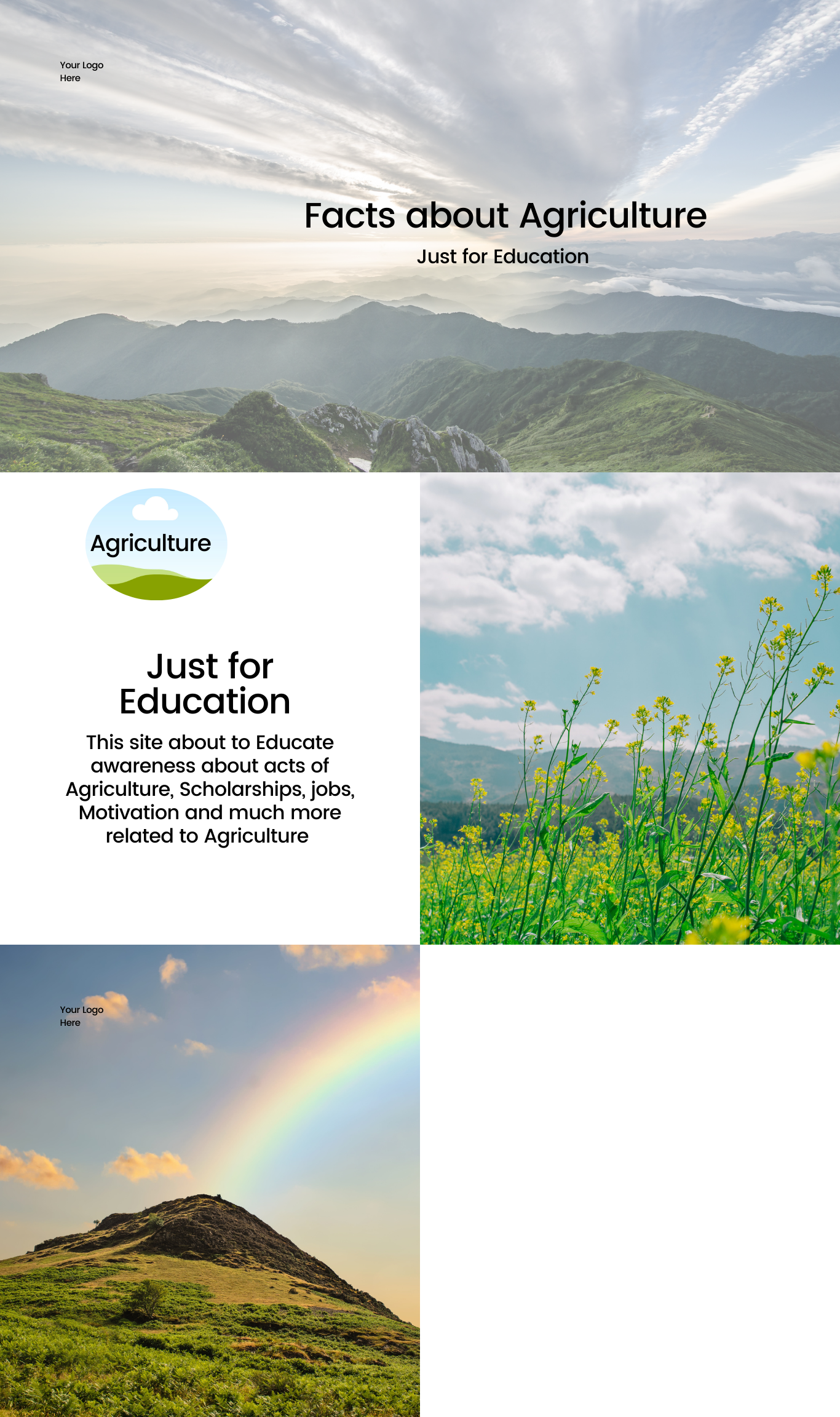🌾 What is Agriculture? A Complete Guide
Agriculture is the foundation of civilization. It is the science, art, and practice of growing crops and raising animals to produce food, fiber, medicinal plants, and other products that sustain and enhance human life.
From ancient farming methods to today’s technology-driven precision agriculture, this field has continuously evolved to feed the world. But agriculture is more than just growing food — it is deeply connected to the economy, environment, and culture of every society.
Let’s explore what agriculture truly means, why it matters, and how it’s changing in the modern era.
🌱 Definition of Agriculture
Agriculture refers to the cultivation of land and the breeding of animals and plants to provide food, fiber, medicinal plants, and other products to sustain and improve life.
According to the Food and Agriculture Organization (FAO), agriculture includes:
- Crop production
- Livestock farming
- Forestry
- Fisheries
- Agro-processing and agri-business
📜 A Brief History of Agriculture
Agriculture began around 10,000 years ago, during the Neolithic era, when humans transitioned from hunting and gathering to farming. Early civilizations like those in Mesopotamia, the Indus Valley, and Egypt developed complex agricultural systems that supported growing populations and led to the rise of cities.
Today, agriculture has transformed into a high-tech industry using GPS, drones, AI, and biotechnology.
💡 Why is Agriculture Important?
1. Food Security
Agriculture provides the food we eat. Without it, there would be no grains, fruits, vegetables, meat, or dairy products.
2. Economic Backbone
In many countries, including Pakistan, agriculture is a major contributor to GDP and employment. It supports millions of farmers, traders, and workers.
3. Raw Materials
It supplies raw materials for industries like textiles (cotton), sugar (sugarcane), paper (wood), and more.
4. Foreign Exchange
Agricultural exports like rice, fruits, cotton, and livestock earn foreign exchange, helping balance trade.
5. Cultural Significance
Farming is part of traditions, festivals, and family livelihoods in rural areas. It shapes rural identity and community life.
🌾 Types of Agriculture
Agriculture can be categorized based on climate, geography, and purpose. Some common types include:
1. Subsistence Farming
Where farmers grow food mainly for their own family. Common in rural and underdeveloped regions.
2. Commercial Farming
Large-scale farming where crops are grown for sale in local or global markets. It often uses machinery and modern techniques.
3. Organic Farming
Uses natural methods, avoiding synthetic fertilizers and pesticides. It’s eco-friendly and gaining popularity.
4. Industrial Agriculture
Highly mechanized and large-scale, often involving monocultures, chemical inputs, and intensive livestock farming.
5. Agroforestry
Combines trees and shrubs with crops or livestock. It improves biodiversity and soil health.
6. Hydroponics & Urban Farming
Modern systems that grow crops without soil, often in cities or small spaces.
📈 Agriculture in Pakistan
In Pakistan, agriculture is a key pillar of the economy, contributing about 19-20% to the GDP and employing nearly 38% of the labor force.
Major Crops:
- Wheat
- Rice
- Sugarcane
- Cotton
- Maize
Livestock Sector:
Livestock contributes more than 60% of the agriculture value-added. Cattle, buffaloes, sheep, goats, and poultry are common.
Challenges:
- Water scarcity
- Climate change
- Soil degradation
- Lack of modern technology
- Poor infrastructure
Opportunities:
- Precision farming
- Agricultural startups
- Export potential
- Climate-smart agriculture
🤖 Modern Agricultural Practices
Modern agriculture integrates science and technology to increase productivity, reduce waste, and conserve resources.
Key Innovations:
- Drones & Remote Sensing: For crop monitoring and spraying.
- AI & Data Analytics: To predict yields and detect pests.
- Vertical Farming: Growing food in stacked layers indoors.
- Biotechnology: Developing improved crop varieties.
- Climate-Smart Practices: Efficient irrigation, organic inputs, and soil conservation.
🌍 Sustainable Agriculture: The Future of Farming
Sustainable agriculture focuses on:
- Protecting natural resources
- Ensuring fair income for farmers
- Feeding the growing population
- Reducing environmental impact
Techniques like crop rotation, cover cropping, composting, biogas, and biochar are being used globally to build soil health and reduce carbon emissions.
🙋♂️ Why Should You Care About Agriculture?
No matter where you live — in a city or a village — agriculture touches your life every day. From the food on your plate to the clothes you wear, agriculture plays a role.
Understanding agriculture helps you:
- Make informed food choices
- Support local farmers
- Respect environmental limits
- Contribute to a better food system
🔚 Conclusion
Agriculture is not just about farming — it’s about life, sustainability, and progress. It has evolved from simple tools to smart technologies, yet its essence remains the same: to feed and nurture humanity.
As we move toward a future with climate challenges, rising populations, and resource scarcity, the role of agriculture is more important than ever.
Let’s support sustainable agriculture, empower farmers, and make informed decisions to protect our planet and food systems.

